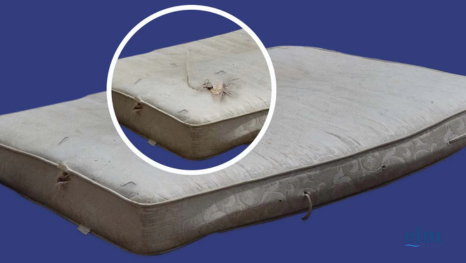
How to Tell If Your Mattress Is No Longer Usable!
Elm Sleep – Have you been waking up with back pain or feeling more tired than when you went to bed? If so, your Mattress No Longer Usable be providing the support you need. Many people overlook the importance of a good mattress, but sleeping on a worn-out one can affect not only your comfort but also your health, posture, and overall well-being.
A high-quality mattress is a long-term investment, but even the best ones don’t last forever. If you’re unsure Mattress No Longer Usable whether it’s time to replace yours, here are some clear signs that your is no longer and needs to go!
Read more :The Benefits of Implementing Accelerated Mobile Pages (AMP)
One of the first indicators that your Mattress No Longer Usable is past its prime is its age. Most mattresses are designed to last between 7 to 10 years, depending on the material and quality. Over time, the structure deteriorates, losing its ability to provide proper support.
If you can’t remember when you last bought your mattress, it’s probably time to start shopping for a new one!
Do you often wake up with back pain, neck stiffness, or aching joints? This could be a major red flag that your mattress is no longer supporting your spine properly. A worn-out mattress sags in certain areas, creating uneven pressure points that lead to discomfort.
A good mattress should provide spinal alignment and weight distribution to prevent body pain. If yours fails to do that, it’s time for an upgrade.
A simple visual inspection can reveal a lot about the condition of your mattress. If you notice:
These are clear signs that the internal materials (foam, springs, or latex) have broken down over time. A sagging mattress won’t give you proper support, leading to discomfort, restless sleep, and body misalignment.
If you’ve been sneezing, coughing, or experiencing allergy flare-ups, your old mattress could be the culprit! Over time, mattresses trap dust mites, mold, dead skin cells, and bacteria, which can trigger allergic reactions or worsen respiratory conditions.
Even if you clean your sheets regularly, a mattress that is past its lifespan will still harbor allergens. Upgrading to a new, hypoallergenic mattress can drastically improve your sleep quality.
A mattress should provide consistent comfort throughout its lifespan. If you find yourself tossing and turning all night or waking up frequently because you can’t find a comfortable position, your mattress may no longer be functional.
Comfort is subjective, but if your mattress feels noticeably different from when you first bought it, it’s a sign that it has lost its original firmness and support.
Do you feel like you sleep better in a hotel bed, a friend’s guest room, or even your couch? If so, it’s not you—it’s your mattress!
A comfortable mattress should feel just as supportive and cozy every night. If you find that you get better sleep anywhere but your own bed, it’s a major clue that your mattress is no longer effective.
If your mattress makes creaking, squeaking, or cracking noises when you move, it means that the internal structure is failing.
For spring mattresses, this could indicate that the coils are worn out or broken. If you have a foam or hybrid mattress, excessive noise may mean the materials inside have lost their density and responsiveness.
A mattress should be silent and supportive if it’s noisy, it’s time for a replacement.
If you sleep with a partner and find that you’re waking each other up due to movement, it means that your mattress is no longer absorbing motion properly.
A good mattress should isolate movement, so if you feel every little toss and turn, it has lost its structure. Upgrading to a high-quality hybrid or memory foam mattress can eliminate motion transfer, giving both of you a peaceful night’s sleep.
Over time, mattresses can absorb moisture and odors, leading to an unpleasant, musty smell.
Even if you use a mattress protector, years of sweat, spills, and humidity can create the perfect environment for mold and mildew to develop. If your mattress emits a lingering odor, it may be harboring bacteria and fungi a sign that it’s no longer hygienic to sleep on.
If your mattress shows multiple signs from this list, replacing it is not just a luxury—it’s a necessity for your health and well-being.
A high-quality mattress offers:
Better spinal support for pain-free sleep
Improved sleep quality and reduced tossing/turning
A healthier sleeping environment free from allergens and bacteria
Enhanced durability that lasts for years
Choosing a new mattress that suits your body type and sleeping style can transform the way you sleep and improve your overall energy levels!
If your mattress is old, uncomfortable, sagging, or affecting your health, the answer is simple it’s time to upgrade!
Investing in a high-quality mattress isn’t just about comfort it’s about your health, productivity, and well-being. Don’t let an outdated mattress ruin your sleep!